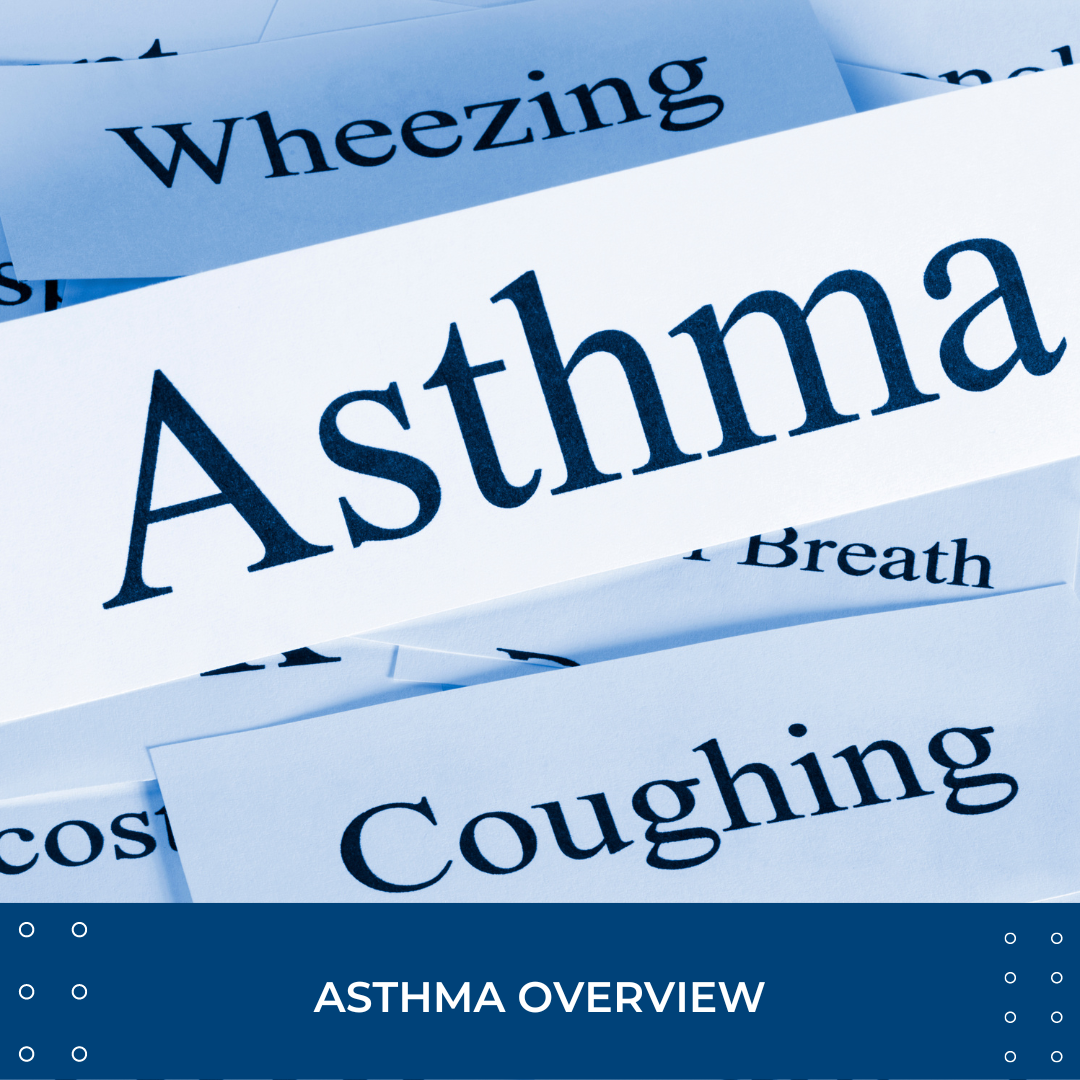
Athma: Condition Overview
What is Asthma?
Asthma is a long-term condition that affects the airways in the lungs. These airways can become inflamed and narrow, making it harder for air to flow through your lungs when you breathe.
What are the Symptoms of Asthma?
The most common symptoms of asthma include:
- Coughing
- Wheezing
- Tightness in the chest
- Shortness of breath
How Do You Get Asthma?
Most people develop asthma during childhood, though it can occur at any time. The cause of asthma is not entirely known, though it is likely impacted by heredity and environment. Those who have a family history of asthma or allergies are more likely to develop asthma.
There are environmental triggers that may lead to asthma, such as:
- Allergens (pollen, mold spores, pet dander, etc.)
- Air irritants (pollution, cigarette smoke, fires, chemicals, etc.)
- Health conditions (food allergies, sleep apnea, GERD, respiratory infections, etc.)
Other factors may include stress, weather, or medications. Every individual is different, and triggers will vary from person to person.
How is Asthma Diagnosed?
There are a number of tests that a medical practitioner may provide to determine if a patient has asthma. One of the most common is a spirometry test. This simple test requires a patient to breathe into a tube to demonstrate how much air they can inhale and exhale, as well as how fast and hard they can breathe. This test is the most popular, as it shows a broad scale of lung function.
Another popular test is the FeNO test. This one requires the patient to blow into a device for several seconds. It is not as in-dept as the spirometry test but can support or rule out an asthma diagnosis and help determine if current treatment is working.
There are also a number of “challenge” tests that may be used if previous tests were not conclusive or if triggers are being identified. These are more physical tests that may include use of irritants and exercise.
What is an Asthma Attack?
An asthmatic episode is often referred to as an asthma attack. This is when the symptoms flare up and it can occur at any time. Sometimes these attacks are mild, though they can require emergency medical care. Asthma attacks are the 3rd ranking cause of hospitalizations for children under the age of 15.
Severe asthma attacks may include the following symptoms:
- Change in skin color (very pale or blue coloring in face, lips, and fingernails)
- Chest does not deflate when you exhale
- Failure to respond to or recognize others
- Rapid breathing / chest retracts on inhale
- No response to fast-acting medications, such as an inhaler
- Rapid nostril / ribs / stomach movement
- Trouble speaking due to lack of air
How is Asthma Treated?
There is no cure for asthma, but treatment can help control symptoms. One of the most common treatments is the use of inhalers. There are two main types of inhalers – rescue/reliever and controller/preventer. Rescue inhalers are generally used during an asthma attack, while controllers are used daily to achieve and maintain control of persistent asthma.
There are metered dose inhalers (MDI), dry powder inhalers (DPI), and soft mist inhalers (SMI). The patient’s doctor will determine which types and methods are best for their individual treatment plan.
Allergy medications may also be recommended or prescribed if the patient’s asthma is worsened or triggered by allergies.
Uncontrolled asthma can lead to serious health issues. If you are experiencing any of the above symptoms, speak to your doctor or health care provider for more information.
